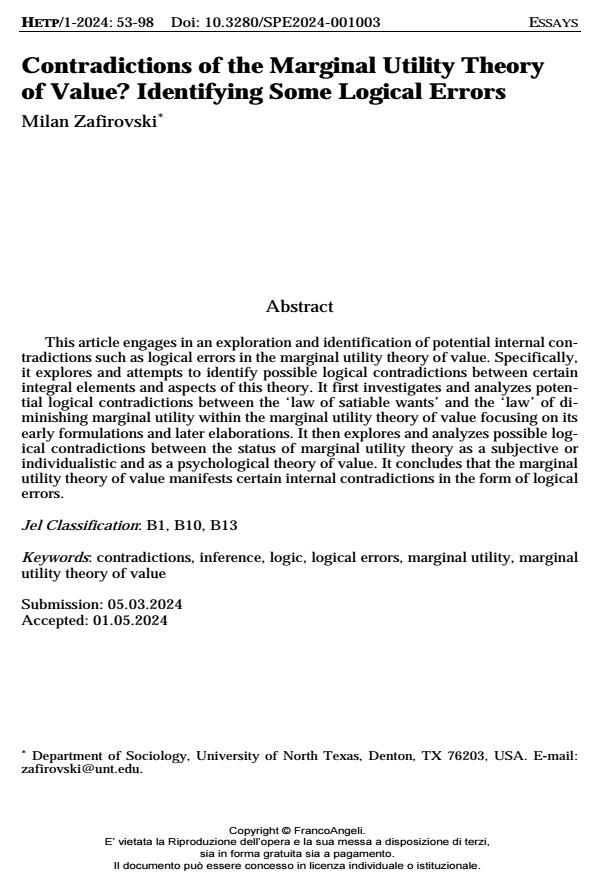Contradictions of the Marginal Utility Theory of Value? Identifying Some Logical Errors
Journal title HISTORY OF ECONOMIC THOUGHT AND POLICY
Author/s Milan Zafirovski
Publishing Year 2024 Issue 2024/1
Language English Pages 46 P. 53-98 File size 198 KB
DOI 10.3280/SPE2024-001003
DOI is like a bar code for intellectual property: to have more infomation
click here
Below, you can see the article first page
If you want to buy this article in PDF format, you can do it, following the instructions to buy download credits

FrancoAngeli is member of Publishers International Linking Association, Inc (PILA), a not-for-profit association which run the CrossRef service enabling links to and from online scholarly content.
This article engages in an exploration and identification of potential internal contradictions such as logical errors in the marginal utility theory of value. Specifi-cally, it explores and attempts to identify possible logical contradictions between certain integral elements and aspects of this theory. It first investigates and ana-lyzes potential logical contradictions between the ‘law of satiable wants’ and the ‘law’ of diminishing marginal utility within the marginal utility theory of value fo-cusing on its early formulations and later elaborations. It then explores and ana-lyzes possible logical contradictions between the status of marginal utility theory as a subjective or individualistic and as a psychological theory of value. It con-cludes that the marginal utility theory of value manifests certain internal contra-dictions in the form of logical errors.
Keywords: contradictions, inference, logic, logical errors, marginal utility, marginal utility theory of value
Jel codes: B1, B10, B13
Milan Zafirovski, Contradictions of the Marginal Utility Theory of Value? Identifying Some Logical Errors in "HISTORY OF ECONOMIC THOUGHT AND POLICY" 1/2024, pp 53-98, DOI: 10.3280/SPE2024-001003